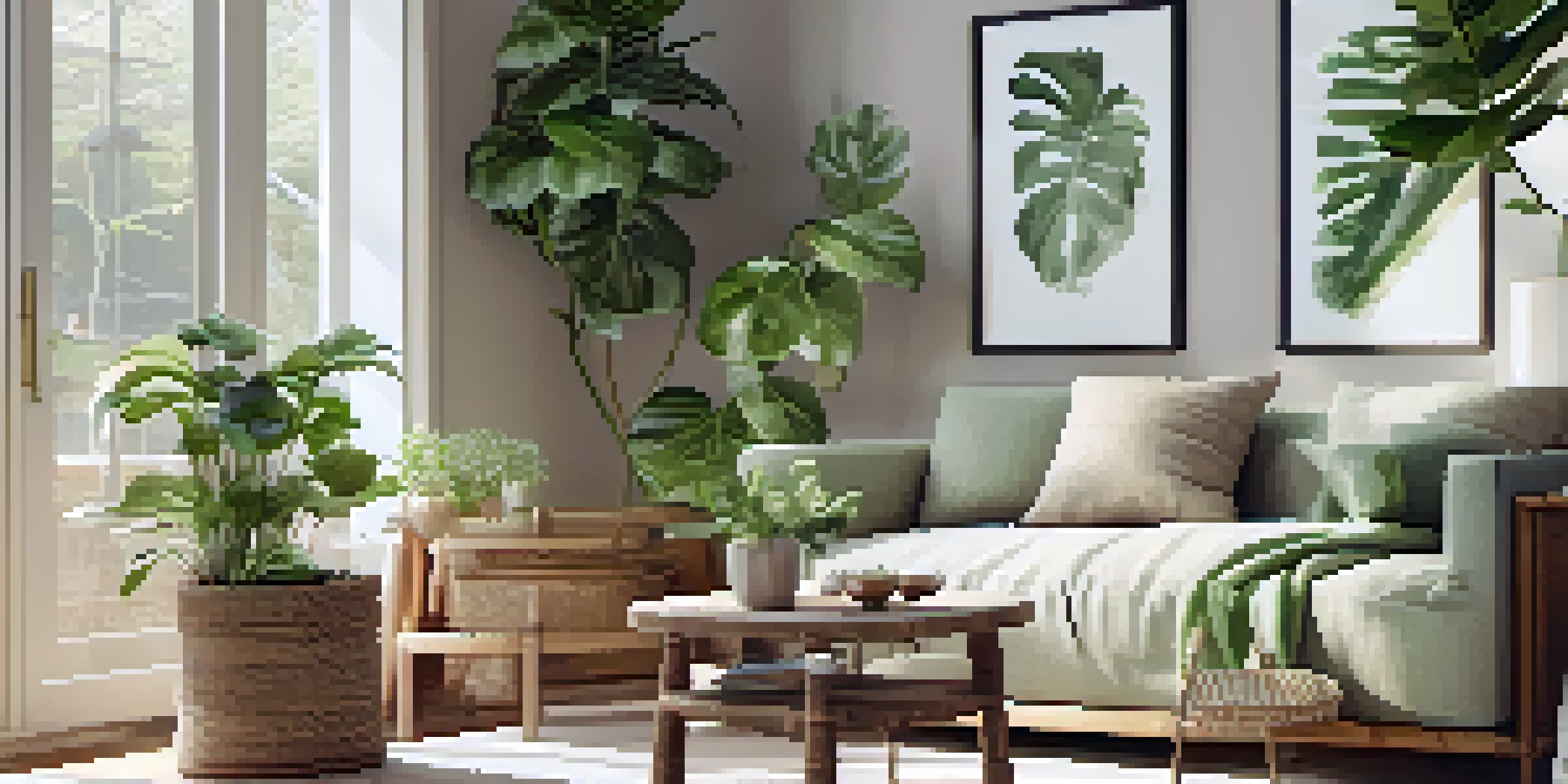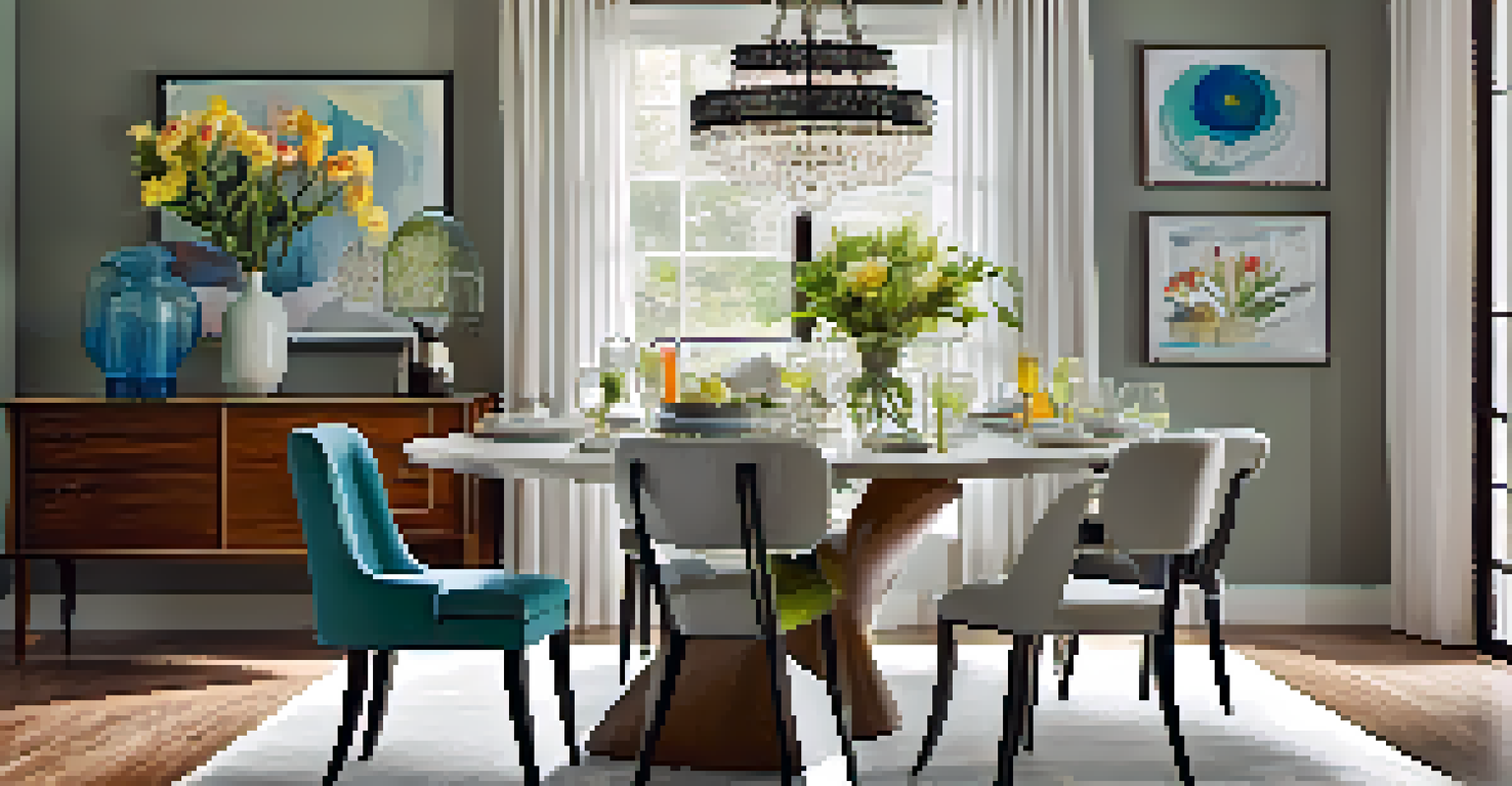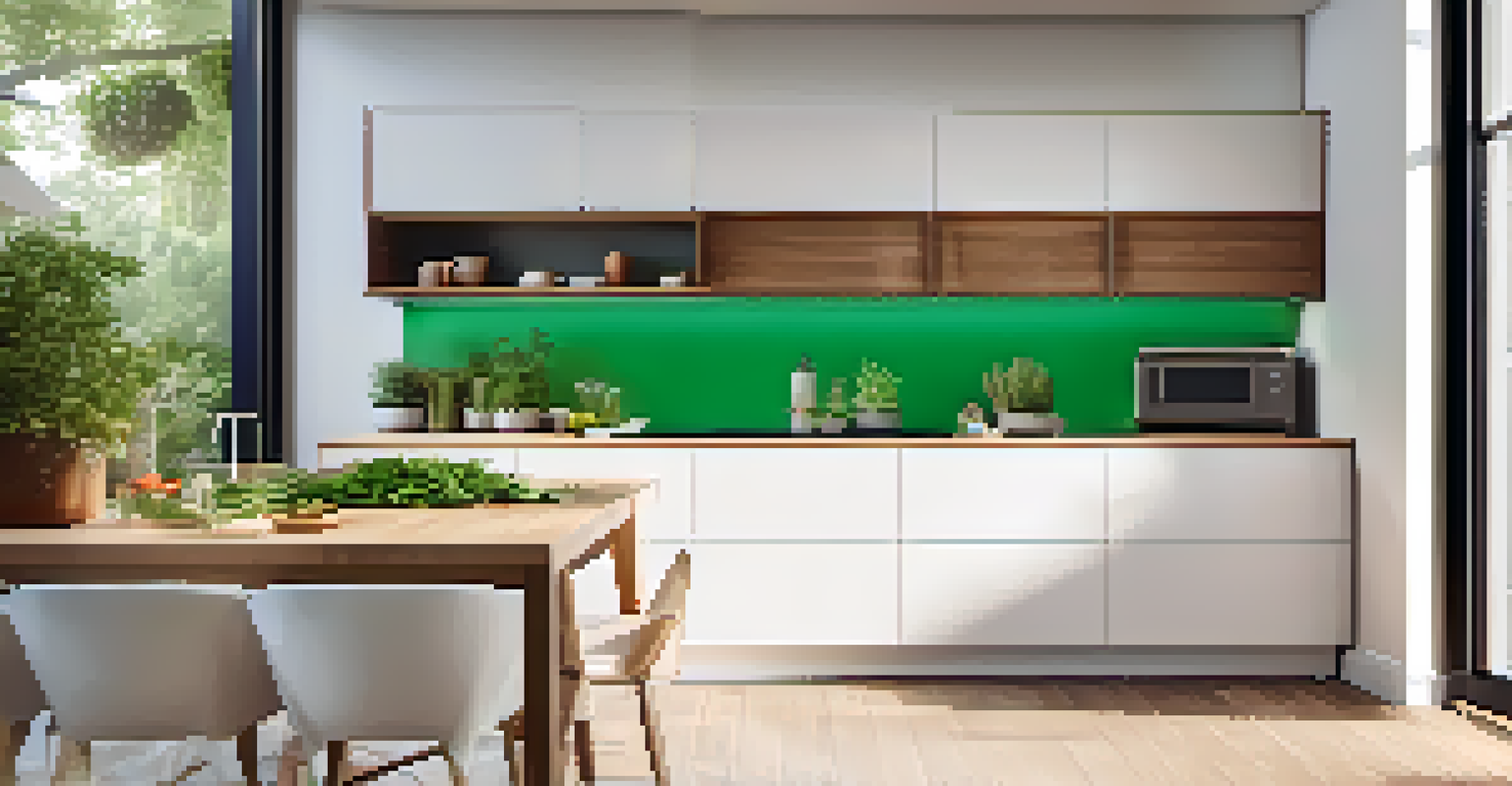Sustainable Practices for Timeless Interior Design Trends

Understanding Sustainable Interior Design Principles
Sustainable interior design focuses on creating spaces that are eco-friendly, functional, and aesthetically pleasing. It emphasizes the use of materials that are renewable, recycled, or sourced responsibly. By incorporating sustainable practices, designers can reduce their environmental footprint while maintaining a timeless appeal.
The greatest threat to our planet is the belief that someone else will save it.
The goal is not just to be trendy but to create spaces that last and minimize waste. For example, choosing high-quality furniture that withstands the test of time can prevent the need for frequent replacements. This approach aligns perfectly with classic design principles that prioritize longevity over fleeting trends.
Furthermore, sustainable design often includes elements like natural lighting and energy-efficient appliances, which contribute to a healthier living environment. By understanding these principles, homeowners can create spaces that are not only beautiful but also mindful of the planet.
Choosing Eco-Friendly Materials for Lasting Impact
Selecting the right materials can significantly enhance the sustainability of your interior design. Opt for resources like bamboo, reclaimed wood, or recycled metal, which are not only eco-friendly but also add unique character to your space. These materials often tell a story, connecting modern design with nature.

Additionally, using low-VOC (volatile organic compounds) paints and finishes can improve indoor air quality while providing a beautiful finish. This is especially important for those sensitive to chemicals, making spaces healthier for everyone. It’s a perfect example of how sustainable choices can blend seamlessly with timeless aesthetics.
Sustainable Design Principles Matter
Sustainable interior design combines eco-friendly materials and timeless aesthetics to create functional spaces that minimize environmental impact.
By prioritizing eco-friendly materials, you create a space that reflects your values and commitment to the environment. This thoughtful approach can elevate your design, making it feel both luxurious and grounded in sustainability.
Incorporating Vintage and Upcycled Furnishings
One of the most effective ways to achieve a timeless look while promoting sustainability is through vintage and upcycled furnishings. These pieces often carry a unique charm and history that new items lack, creating a more personal connection within your space. Imagine a beautifully restored mid-century chair that sparks conversations and admiration.
Sustainability is no longer about doing less harm. It’s about doing more good.
Upcycling furniture not only reduces waste but also allows for creativity in design. For instance, transforming an old dresser into a chic bathroom vanity can provide both functionality and a touch of whimsy. This blend of old and new can create a distinctive style that feels both inviting and stylish.
By incorporating vintage and upcycled items, you not only contribute to a circular economy but also cultivate a space that feels curated and intentional. This approach is a hallmark of timeless design, showcasing that sustainability and style can go hand in hand.
Embracing Minimalism for Sustainable Design
Minimalism is more than just a design trend; it's a sustainable lifestyle choice. By focusing on quality over quantity, minimalism encourages the use of fewer, well-made items that will last for years. This not only reduces clutter but also diminishes the need for constant replacements.
A minimalist approach often leads to a more tranquil and harmonious living environment, making it easier to appreciate the beauty of each piece. Imagine a simple, well-designed room where every item has purpose and meaning, creating a serene atmosphere that stands the test of time.
Embrace Vintage for Unique Style
Incorporating vintage and upcycled furnishings not only reduces waste but also adds character and charm to your interior spaces.
By embracing minimalism, you can create a timeless interior that is both functional and aesthetically pleasing. It’s a perfect example of how less can truly be more, allowing sustainable practices to shine in your design choices.
Lighting Solutions That Are Both Stylish and Sustainable
Lighting plays a crucial role in interior design, and choosing the right fixtures can enhance sustainability without sacrificing style. LED lights are an excellent choice, as they consume less energy and have a longer lifespan compared to traditional bulbs. This means fewer replacements and lower energy bills.
Consider the aesthetic impact of your lighting choices, too. Vintage-inspired fixtures or sleek, modern designs can create a focal point in a room while promoting energy efficiency. Proper lighting can transform a space, making it feel warm and inviting, all while being mindful of the environment.
Incorporating natural light through well-placed windows and mirrors can further enhance sustainability. This not only reduces the need for artificial lighting but also creates a bright, airy atmosphere that aligns with timeless design principles.
Integrating Greenery for Health and Aesthetics
Bringing plants into your interior design is a beautiful way to promote sustainability and improve indoor air quality. Plants act as natural air purifiers, absorbing toxins and releasing oxygen, creating a healthier living environment. Imagine a lush, green corner in your home that not only looks good but also feels refreshing.
Incorporating greenery can also soften the lines of modern design, creating a harmonious balance between nature and architecture. Whether it's a large potted plant or a vertical garden, the addition of greenery introduces life and vibrancy to your space.
Smart Tech Enhances Sustainability
Integrating smart technology into your home can significantly reduce energy consumption while maintaining a stylish and efficient living environment.
Moreover, the timeless appeal of plants complements various design styles, from bohemian to minimalist. By integrating nature into your home, you foster a connection to the outdoors, reinforcing the sustainable practices that underline your design choices.
The Role of Smart Technology in Sustainable Design
In today’s digital age, smart technology has become an essential component of sustainable interior design. Smart thermostats, energy-efficient appliances, and automated lighting systems can significantly reduce energy consumption and promote a sustainable lifestyle. This technology not only enhances convenience but also supports eco-friendly living.
Imagine controlling your home’s energy use through your smartphone—adjusting the thermostat while you’re away or setting lights to turn off automatically. These innovations contribute to a more efficient home, aligning perfectly with timeless design that emphasizes functionality.

By integrating smart technology, you can create a modern, sustainable living space that is both stylish and efficient. This blend of innovation and design can elevate your home, making it a shining example of how technology can support sustainable practices.